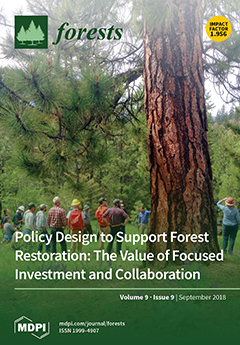Foliar uptake of gaseous NO
2 mainly occurs through the stomata and disrupts normal plant growth, but no detailed reports about the physiological responses of plants exposed to NO
2 are available. In this study, to study leaf physicochemical responses, stomatal characteristics and
[...] Read more.
Foliar uptake of gaseous NO
2 mainly occurs through the stomata and disrupts normal plant growth, but no detailed reports about the physiological responses of plants exposed to NO
2 are available. In this study, to study leaf physicochemical responses, stomatal characteristics and chloroplast structure, we observed the leaves of
Carpinus putoensis W.C.Cheng after exposure to NO
2 (6 μL/L) for five time periods (0, 1, 6, 24, and 72 h) and after 30 days of recovery following NO
2 exposure. Our results showed that short-duration exposure to a high concentration of NO
2 had significant negative impacts (
p < 0.05) on the chlorophyll content, photosynthesis and chloroplast-related physicochemical processes of
C. putoensis leaves; with the exception of one hour of NO
2 exposure, which was helpful for plant physiological responses. Moreover, NO
2 exposure significantly increased the thickness of the palisade/spongy tissue and caused swelling of the thylakoids within the chloroplasts; this thylakoid swelling could be reversed by removing the pollutant from the air flow. Restoration of unpolluted air alleviated the toxic effects of NO
2, as indicated by an increased chlorophyll content, net photosynthesis, and PSII maximum quantum yield. These results could support the development of a treatment for roadside trees that are exposed to NO
2 as a major road pollutant.
Full article





